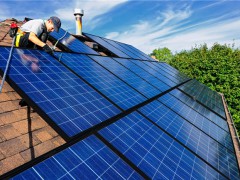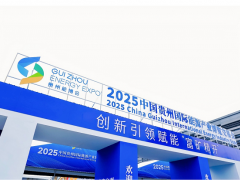據(jù)油價網(wǎng)1月27日消息稱,疫情管控的優(yōu)化和供應(yīng)鏈的轉(zhuǎn)移提振了亞洲的增長,盡管通脹和氣候變化帶來了重大阻力。
雖然泰國和越南等東南亞國家在2021年取消了限制,但2022年最后一個季度,日本向外國游客重新開放邊境,亞洲疫情管理措施優(yōu)化,表明亞太地區(qū)的經(jīng)濟正在逐步恢復(fù)正常。
同樣阻礙全球經(jīng)濟增長的問題——通脹、供應(yīng)鏈瓶頸以及地緣政治沖突導(dǎo)致的大宗商品價格高企——也影響了亞洲經(jīng)濟體;然而,該地區(qū)的表現(xiàn)繼續(xù)優(yōu)于世界其他地區(qū)。
由于大宗商品價格高企繼續(xù)影響供應(yīng)鏈,東亞是2022年第三季度唯一實現(xiàn)貿(mào)易增長的地區(qū),盡管全球貿(mào)易額下滑。
曹海斌 摘譯自 油價網(wǎng)
原文如下:
Asia Set For Rapid Renewable Energy Expansion In 2023
An easing of Covid-19-related restrictions and shifting supply chains have bolstered growth in Asia, even as inflation and climate change generate significant headwinds.
While South-east Asian countries such as Thailand and Vietnam had lifted restrictions in 2021, the last quarter of this year saw Japan reopen its borders to foreign travellers and Asia begin to roll back Covid-19-contaiment policies, signalling a gradual return to economic normalcy in the Asia-Pacific region.
The same issues stalling economic growth across the globe – inflation, supply chain bottlenecks and high commodity prices stemming from the third larggest producer’s ongoing the war – have impacted Asian economies; however, the region continues to outperform the rest of the world.
As high commodity prices continue to impact supply chains, East Asia was the only region to see trade growth in the third quarter of the year, even as global trade volumes sagged.
Much of the downgrade in regional growth forecasts is due to Asian slowdown, with the IMF expecting the country’s growth to dip to 3.2% in 2022 due in part to the economic barriers imposed by its stringent zero-Covid-19 policy.
免責聲明:本網(wǎng)轉(zhuǎn)載自其它媒體的文章及圖片,目的在于弘揚石化精神,傳遞更多石化信息,宣傳國家石化產(chǎn)業(yè)政策,展示國家石化產(chǎn)業(yè)形象,參與國際石化產(chǎn)業(yè)輿論競爭,提高國際石化產(chǎn)業(yè)話語權(quán),并不代表本網(wǎng)贊同其觀點和對其真實性負責,在此我們謹向原作者和原媒體致以崇高敬意。如果您認為本站文章及圖片侵犯了您的版權(quán),請與我們聯(lián)系,我們將第一時間刪除。







